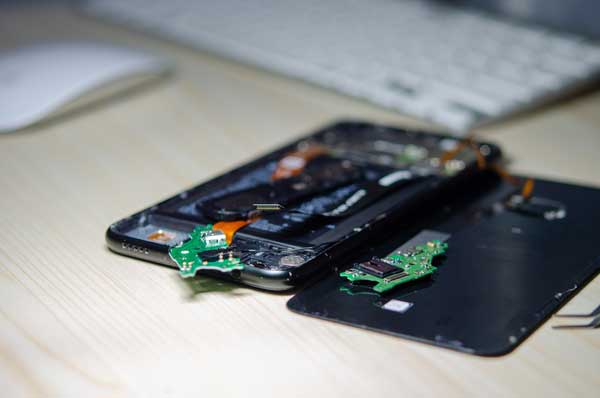In the early days of Cold Fusion’s journey, replaceable batteries in Android phones were the norm. However, as design trends shifted and materials like glass and glue became industry standards, the era of easily replaceable batteries seemed to fade away. But now, thanks to a groundbreaking decision by the European Parliament, the winds of change are blowing. This article delves into the EU’s new law, its implications for consumer electronics, and its potential impact worldwide.

EU’s Push for Easily Replaceable Batteries
In June 2023, the European Parliament overwhelmingly voted in favor of a law that would reshape the consumer electronics landscape. This legislation mandates that all devices, including phones, tablets, and laptops, have easily replaceable batteries. The significance of this decision cannot be understated, as it will force manufacturers to reconsider their design and production strategies.
A New Standard for Battery Replacement
The EU’s definition of “easily replaceable” hinges on the concept that battery replacement should require no specialized tools. Adhesives, once widely used in device assembly, will be replaced by designs that facilitate battery swaps by non-experts. The traditional glass sandwich construction of smartphones, popular for its sleekness, faces challenges due to its adhesive-intensive nature. Companies like Apple, Google, and Samsung may need to devise innovative solutions to comply with the new law.
Global Ramifications of EU’s Battery Law
While the EU law directly impacts its member states, its influence is bound to reach far beyond European borders. Manufacturers are unlikely to create separate designs for different regions, leading to a ripple effect across the globe. Companies, including tech giants like Apple, will have to navigate the balance between compliance and profitability. This law extends its reach to other devices like tablets, laptops, EVs, and e-bikes, heralding a shift in how devices are constructed and repaired.
Apple’s Conundrum and Industry-Wide Adjustments
Apple, a key player in the smartphone market, will face a significant challenge as its devices have traditionally featured non-removable batteries. This law disrupts their design paradigm, potentially triggering a redesign of their flagship iPhones. Moreover, it forces manufacturers to reevaluate waterproofing and dustproofing strategies, a challenge that right-to-repair advocates and design experts are already debating.
Right to Repair and Consumer Empowerment
The replaceable battery law aligns with the ethos of the right-to-repair movement, advocating for consumer goods to be easily repairable. Companies like Apple, with their tightly controlled repair processes, have been at odds with this movement. The law’s implications extend beyond battery replacement, encompassing repairability and consumer empowerment in an age of complex devices.
Apple’s Repair Policies Under Scrutiny
Apple’s practices of locking down devices and discouraging third-party repairs have ignited controversy. The company’s efforts to ensure users only seek repairs from Apple-certified sources have raised concerns of monopolization and anti-consumer behavior. The law’s enforcement could challenge these practices and encourage a more open approach to repairs.
Environmental Considerations and Circular Economy
The EU’s primary motive behind the replaceable battery law is environmental conservation. The growing issue of electronic waste, or e-waste, resulting from discarded devices with non-replaceable batteries, has prompted this legislative intervention. The EU aims to establish a circular economy for batteries, reducing waste and maximizing resource efficiency.
A Greener Path Forward
The staggering amount of e-waste generated annually due to non-replaceable batteries paints a grim picture. The EU’s law mandates the collection and recycling of batteries, setting targets for lithium recovery, recyclable content, and recycling efficiency. While enforcement might prove challenging, the law’s intention to minimize battery waste remains a commendable step toward environmental stewardship.
Conclusion: A New Dawn for Device Batteries
As the EU’s replaceable battery law looms on the horizon, the tech industry braces for transformation. From smartphones to EVs, devices are set to undergo a renaissance of design and repairability. This law’s impact will extend across borders, potentially influencing global design practices. While the tension between profit and consumer rights persists, the environment stands to gain from reduced e-waste and a more sustainable approach to battery usage. The next few years will undoubtedly witness a paradigm shift in consumer electronics, powered by the EU’s vision for a battery-powered future.
